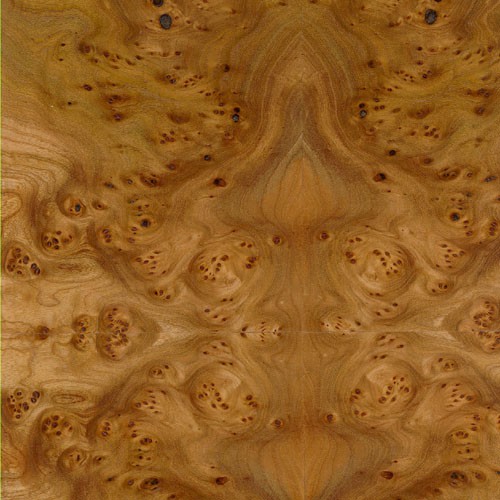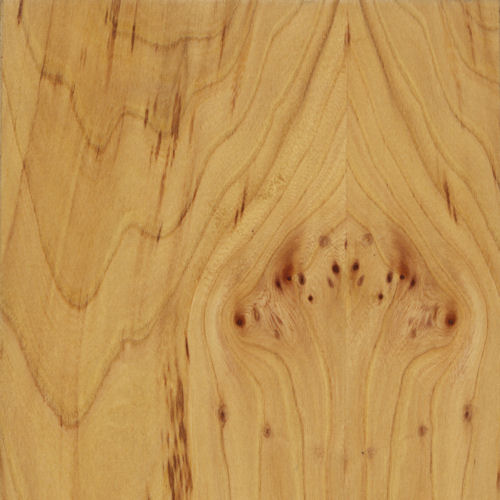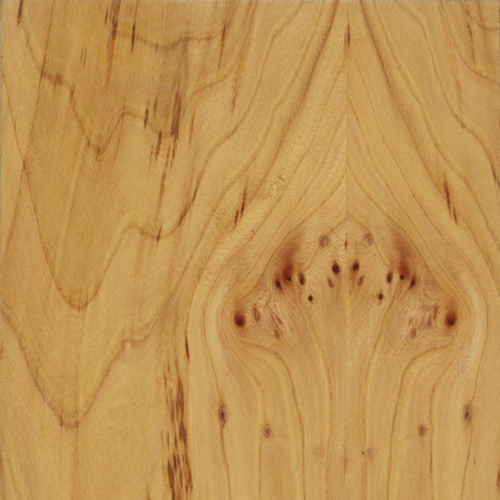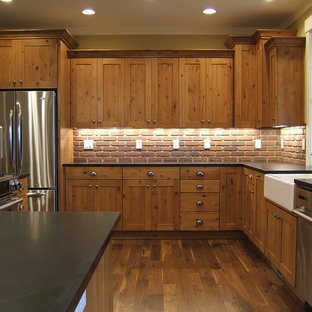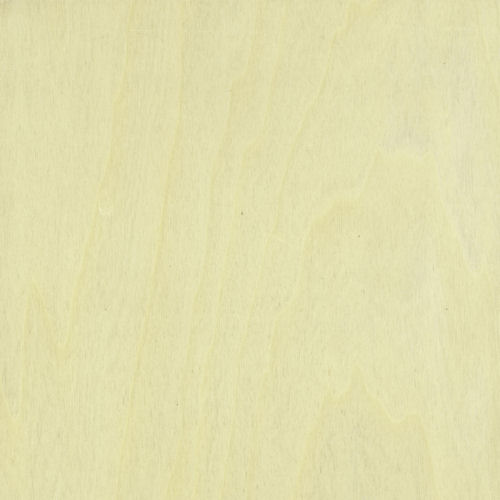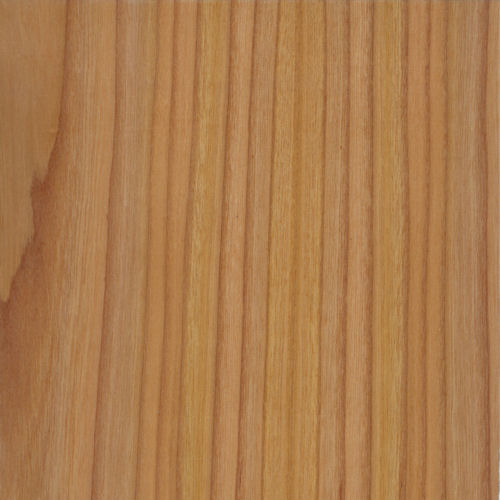Carpathian Elm (English)
[Ulmus procera]
An eye-catchingly exotic wood, Carpathian Elm actually isn’t a particular species within the Ulmus genus. Rather it’s the burl form of English Elm, which, beyond England, grows throughout Western Europe and as far east as, you guessed it — the Carpathian Mountains, the namesake of this captivating variety of Ulmus procera.
A stately, deciduous tree that grows more than 100 feet tall, English Elm in its pure form is the quintessential example of a species that has enjoyed both spectacular popularity and tragic decline.
Widely accepted as a native species of England and Wales, evidence suggests that the English Elm’s lineage actually originated in Italy, then followed the conquering sprawl of the Roman Empire into Spain — and then into Britain. Granted, no specific details of how or when the Romans brought the species to England exists, but the English Elm flourished in the British Isles for more than 1,000 years after the Romans left Britain.
In fact, during the Enclosure Movement between 1550 and 1850, the English Elm became the preferred tree for planting in the popular Hawthorn Hedgerow style. It flourished so greatly that in the Severn Valley, English Elm densities at the time reached over 1,000 trees per square kilometer. Then in the 18th and 19th Centuries, the species became the tree of fashion for forming groves and lining avenues, notably in The Backs, Cambridge, and along the Long Walk in the Windsor Great Park.
Without question, the English Elm was celebrated as the most beloved landscape species for centuries, with lines of full-sized, majestic trees dominating the English countryside in every direction.
Then in the 1960s and 1970s, disaster struck — in the form of the Dutch Elm disease (DED). Highly susceptible to DED, nearly 20 million English Elm trees were wiped off the British landscape in just two decades. And now mature trees are only very rarely found in the occasional hedgerow or woodland.
Fortunately, prior to its demise in Britain, the English Elm had been introduced in North America, Australia, and New Zealand. And is still commonly found down under, where it is regarded as one of the best street or avenue trees. And, of course, it still grows in Western Europe and the Carpathian Mountains.
Wherever it’s found, English Elm is a handsome, durable wood. An overall brick red to tan color, it features a light to medium reddish brown heartwood and paler sapwood. The grain is interlocked, often full of character marks, with a somewhat coarse, uneven texture. And when it’s burled, it reaches the otherworldly levels of exotic figuring its renowned for — as Carpathian Elm.
One of the most striking burls available, its fantastic eye appeal makes Carpathian Elm an elite choice for wood veneer sheets, custom plywood, and furniture. Not to be forgotten, English Elm in non-burled form is a popular choice in its own right — for furniture, flooring, hockey sticks, archery bows, turned objects, boxes and crates.
Species Distribution:
Western Europe
France
England
Wales
Carpathian Mountains
Common / Alternative Names:
Carpathian Elm
European Elm
Janka Hardness:
810 lbf
Sustainability Status:
CITES Appendices: Not listed
IUCN Red List of Threatened Species: Not listed
Related Species:
American Elm (Ulmus americana)
Cedar Elm (Ulmus crassifolia)
Dutch Elm (Ulmus x hollandica)
Red Elm (Ulmus rubra)
Rock Elm (Ulmus thomasii)
Winged Elm (Ulmus alata)
Wych Elm (Ulmus glabra)



